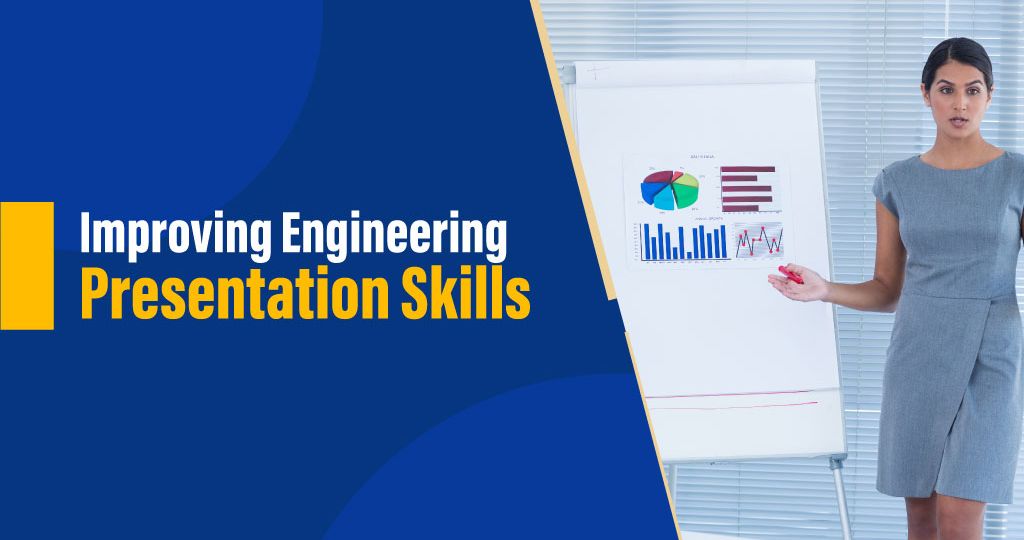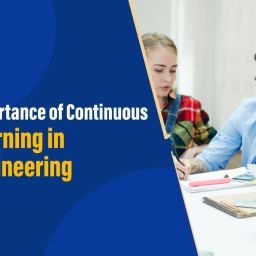
Presentation skills are a vital skill for engineering professionals, whether at college or in the workplace. Pursuing at the top electronics and communication engineering colleges in Coimbatore prepares you to deliver the best presentations to diverse audiences throughout your life.
Importance of good presentation skills:
It’s not just about communicating your thoughts or information, but about doing it in a way that captivates your audience.
At colleges, presentations enable teachers to know how much you have learned. And at workplace settings presentation skills are essential to convince potential clients and share your learnings with your peers, they enable you to convey your key ideas to a larger audience effectively.
Many electronics and communication engineering professionals use this skill to present information, but the art is mastered only by a few. It’s about how you deliver your thoughts and it takes much practice.
Engineering presentation skills can be improved with time and practice Here are some tips to level up your engineering presentation skills:
1) Get to know your subject and audience: Having a clear understanding of the topic you will present and about the audience is critical while preparing your presentation.
A presentation to a group of electronics and communication engineering college students and a business presentation to your clients will require different approaches.
Tailoring your message, delivery style, and depth of content based on your audience preferences and having deep insights on the topic will enable you to communicate effectively.
2) Take your time: Do not rush while delivering your engineering presentation, the key is to speak clearly and at a comfortable pace. It indicates the confidence you have in yourself and the subject matter.
The audience will not be able to understand you when you speak too quickly. Every member of the audience matters, so make sure you project your voice so that everyone in the room can hear you clearly.
3) Use open and friendly body language: Embracing friendly body language is a quick way to improve your engineering presentation. Avoid crossing your arms or keeping your hands in your pockets as they convey disinterest.
Display your confidence and friendly nature subtly, use gestures to keep your audience engaged, and consider moving around the room to kindle visual interest.
4) Practice for best outcomes: Practice is critical to enhance your presentation skills. Practicing in front of the mirror helps you to identify areas for improvement.
You can gain valuable feedback while rehearsing in front of friends, also you can also record your speech to give you an idea of the duration or make necessary changes for the best results.
5) Keep your presentation engaging and structured: You might have a great idea for your engineering presentation, but unless it’s engaging it can be challenging to capture your audience’s attention and sustain their interest throughout.
Including stories, videos, images, or humor will make your presentation engaging and ensure a steady pace without over-extending each section to sustain your audience’s interest.
6) Keep it simple: Keep your visual slides concise with bullet points, do not overcrowd them with text, and use visuals sparingly to get your point across as they can distract your audience discouraging them from looking at it.
7) Make eye contact: Establish eye contact with your audience to keep your audience engaged and connect with them on a personal level. People pay more attention when they realize that they are being noticed.
Also, avoid filling pauses in your speech, it indicates that you are confident and ensures a smooth delivery.
8) Be authentic: Be yourself, during your engineering presentation, this establishes trust and credibility with your audience. Choose a presentation style that is unique and displays all your strengths.
Karpagam Institute of Technology (KIT) is one of the best electronics and communication engineering colleges in Tamil Nadu that equips students with the confidence and skills to become industry-ready.
Let’s explore the various presentation styles, each having their unique strengths:
Visual style: This style involves using visual aids like images, infographics, and charts to convey your information effectively. It helps present complex concepts through simple, clear, and illustrative visuals and is effective for engaging visual learners.
Freeform style: This approach is effective for shorter presentations; this embraces a flexible structure with compelling narratives to capture your audience’s interest.
Instructor style: This approach is commonly used in educational settings and involves a structured approach, wherein the presenter imparts knowledge and guides the audience systematically.
Coach style: This style focuses on encouraging and inspiring the audience to take action.
Storytelling style: Presenters use personal stories, anecdotes, etc., to emotionally connect with their audience and build a rapport.
Connector style: Presenters embrace this style to emphasize shared experiences or values to establish a connection with their audience. This approach is best when you are presenting to your peers at college or the workplace.
Lessig style: This approach is ideal for short presentations to convey information quickly and efficiently.
Takahashi style: This approach uses large plain text on slides with no visuals and is concise, ideal for quick presentations when you are short of time.
Final thoughts:
A good engineering presentation is one where you have had enough practice and can keep the audience engaged throughout. Be thorough in your research, focus on what you are saying, and speak clearly and confidently for the best outcomes.
Also, if you lose track of where you are while speaking, pause for a moment to get your focus back.




